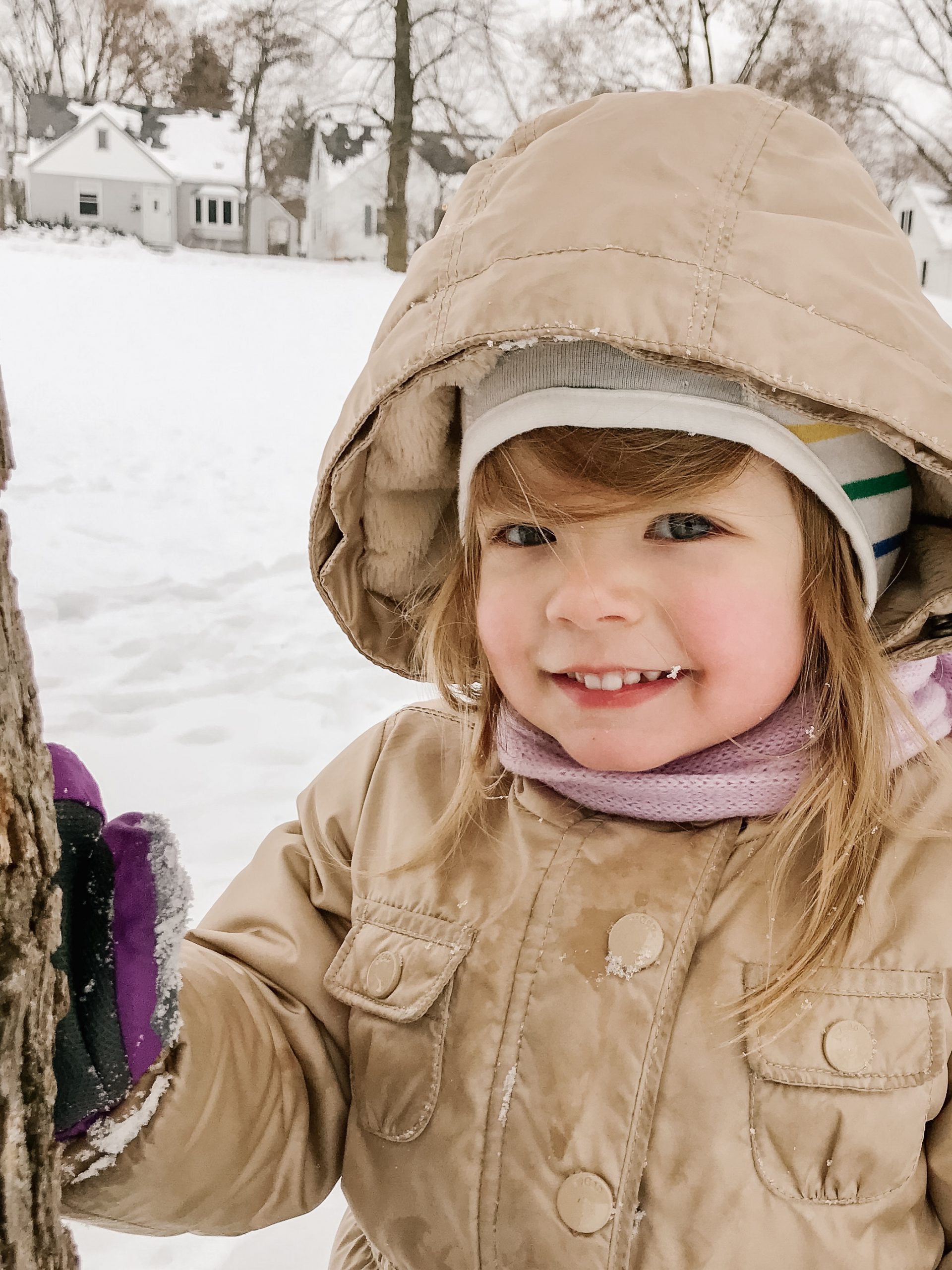We all understand how important helmets are when biking, but what about sledding?
Children’s Minnesota nurse Jessica understands just how important helmets are while sledding—especially after watching her 2-year-old daughter, Genevieve, take a spill on the hill.
Early in January, Jessica took her daughter sledding on a small hill at a local park. But one of Genevieve’s trips down the hill didn’t go smoothly. She lost her balance on the sled and hit the back of her head on some hard, packed snow. But luckily, she had a helmet on while sledding, so she popped right back up and was ready to sled again.
“I am so thankful I had just read an article about the importance of wearing a helmet while sledding,” said Jessica. “I wouldn’t have thought to put a helmet on her head while sledding down the small hill in our park, but I’m so glad I did.”
After a fall like that, Genevieve likely would have needed a trip to the emergency department. But she was perfectly fine—all thanks to her helmet.

How do I decide what helmet to use for sledding?
If your child has a properly-fitting bike helmet, they have a sledding helmet, too! Skateboard or skiing helmets also work well to protect kids’ noggins while sledding.
Before using a helmet, be sure to check the label or packaging to ensure it follows proper safety crash standards.
How do I know if a helmet fits properly?
Here are five ways to make sure a helmet fits your child properly:
- Make sure the helmet sits level on their head.
- The front of the helmet should not sit more than two finger widths above their eyebrows.
- When buckled, you should not be able to fit more than one finger between the strap and their chin.
- Check to make sure the straps form a ‘V’ under your child’s ears.
- Have your child move their head from side to side to make sure the helmet doesn’t wiggle.
Emergency care at Children’s Minnesota
At Children’s Minnesota, the only thing we love more than treating kids is seeing them safe at home. However, we understand that accidents can and do happen. That’s why our emergency departments in Minneapolis and St. Paul are open 24/7 365 days a year.
Level 1 trauma center in Minneapolis
Children’s Minnesota Minneapolis hospital is home to the area’s only Level I pediatric trauma center in a hospital dedicated only to kids. That means we’re ready to handle any injury—no matter what.
Level IV trauma center in St. Paul
Our Peter J. King Emergency Department in St. Paul is a Level IV trauma center in St. Paul, with resources for emergency resuscitation and care of injured patients. Some patients may require transfer to the Minneapolis campus for care by the Trauma Care team and other specialists.